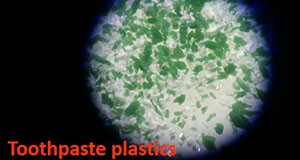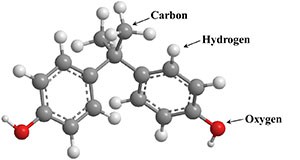
Plastic, plastic everywhere! We live in a world where we are surrounded by plastic: from packaging materials and cutlery to plastic appliances and medical devices. Since the mid-twentieth century, plastic has been a boon to humanity and an integral part of our modern lives. However, plastic debris is a major concern due to its abundance and persistence in the environment. Plastic contaminants not only include plastic debris characterized by large size but also small pieces of plastic in the millimeter size range; these inconspicuous “microplastics” have become a major concern because of their widespread presence in different environments and diverse organisms. This six-page fact sheet discusses the sources of microplastics, their effects on the environment, and ways to minimize microplastics pollution and exposure. Written by Yun-Ya Yang, Ignacio A. Rodriquez, Maia McGuire, and Gurpal S. Toor, and published by the Soil and Water Science Department.
http://edis.ifas.ufl.edu/ss649
Tag: Ignacio A. Rodriguez-Jorquera
Contaminants in the Urban Environment: Bisphenol-A

Bisphenol-A (BPA) is a man-made chemical widely used as a component in many products of daily use in households, such as plastic bottles and metallic canned foods. BPA can leach from bottles and cans into the environment, increasing our exposure to BPA. BPA is known to harm exposed animals in laboratory settings as well as in the wild, although its potential to harm humans remains controversial. This seven-page fact sheet will discuss the occurrence, use, and potential harmful effects of BPA and will suggest ways to reduce human and environmental exposure to BPA. Written by Ignacio A. Rodriquez-Jorquera, Yun Ya Yang, and Gurpal S. Toor and published by the Soil and Water Science Department.
http://edis.ifas.ufl.edu/ss648
Contaminantes en el Medio Ambiente Urbano: Los Perfluoroalquilos
 Los perfluoroalquilos–los perfluorocarbonos (PFC) o, en inglés, perfluoroalkyl substances (PFASs)–son los productos químicos artificiales más comunes y persistentes en el planeta. Algunos de los productos más comunes que contienen perfluoroalquilos son sartenes de teflón, utensilios de cocina antiadherente, chaquetas impermeables (como Gore-Tex), espumas de extinción de incendios, envases de alimentos, alfombras y telas para muebles. Los perfluoroalquilos poseen un largo tiempo de residencia en el medio ambiente, lo que significa que los perfluoroalquilos pueden acumularse en los organismos en niveles que causan efectos nocivos.
Los perfluoroalquilos–los perfluorocarbonos (PFC) o, en inglés, perfluoroalkyl substances (PFASs)–son los productos químicos artificiales más comunes y persistentes en el planeta. Algunos de los productos más comunes que contienen perfluoroalquilos son sartenes de teflón, utensilios de cocina antiadherente, chaquetas impermeables (como Gore-Tex), espumas de extinción de incendios, envases de alimentos, alfombras y telas para muebles. Los perfluoroalquilos poseen un largo tiempo de residencia en el medio ambiente, lo que significa que los perfluoroalquilos pueden acumularse en los organismos en niveles que causan efectos nocivos.
This 6-page fact sheet is the Spanish language version of Contaminants in the Urban Environment: Perfluoroalkyl Substances, written by Ignacio A. Rodriguez-Jorquera and Gurpal S. Toor, and published by the UF Department of Soil and Water Science, June 2015.
http://edis.ifas.ufl.edu/ss644
Feature image credit: iStock/Thinkstock.com (non-stick pan, waterproof fabric, and fire fighting foam)/Digital Vision/Thinkstock.com (fast food)
Contaminants in the Urban Environment: Perfluoroalkyl Substances
 Perfluoroalkyl substances (PFASs) or perfluorochemicals (PFCs) are the most widespread and persistent manmade chemicals on earth. Common products that contain PFASs are Teflon pans, non-stick cookware, rain/waterproof jackets (like Gore-Tex), fire-fighting foams, food packaging, carpets, and furniture fabrics. PFASs stay in the environment for a long period of time, which means they can accumulate in organisms to levels that cause harmful effects. This 9-page fact sheet discusses the occurrence, use, exposure, and potential harmful effects of PFASs to humans and the environment, and suggests ways to reduce your exposure to PFSAs. Written by Ignacio A. Rodriguez-Jorquera and Gurpal S. Toor, and published by the UF Department of Soil and Water Science, March 2015. (Photos: Thinkstock.com)
Perfluoroalkyl substances (PFASs) or perfluorochemicals (PFCs) are the most widespread and persistent manmade chemicals on earth. Common products that contain PFASs are Teflon pans, non-stick cookware, rain/waterproof jackets (like Gore-Tex), fire-fighting foams, food packaging, carpets, and furniture fabrics. PFASs stay in the environment for a long period of time, which means they can accumulate in organisms to levels that cause harmful effects. This 9-page fact sheet discusses the occurrence, use, exposure, and potential harmful effects of PFASs to humans and the environment, and suggests ways to reduce your exposure to PFSAs. Written by Ignacio A. Rodriguez-Jorquera and Gurpal S. Toor, and published by the UF Department of Soil and Water Science, March 2015. (Photos: Thinkstock.com)
http://edis.ifas.ufl.edu/ss631